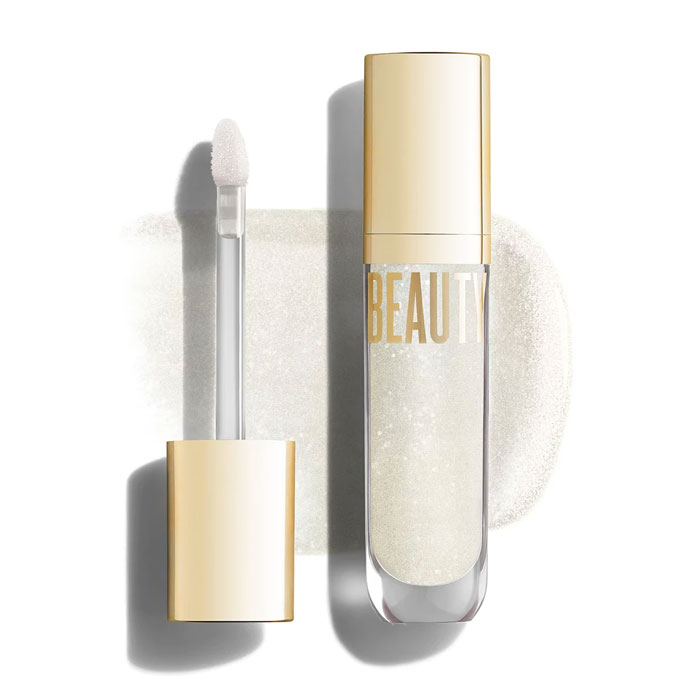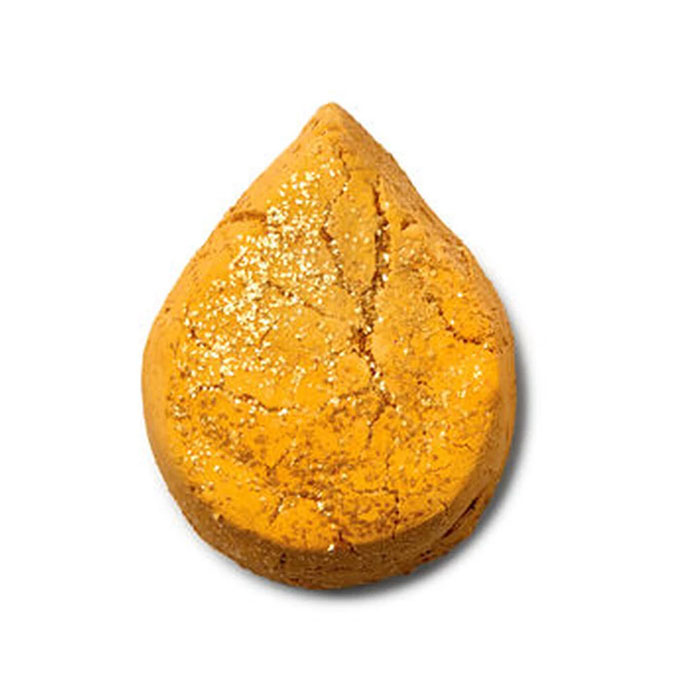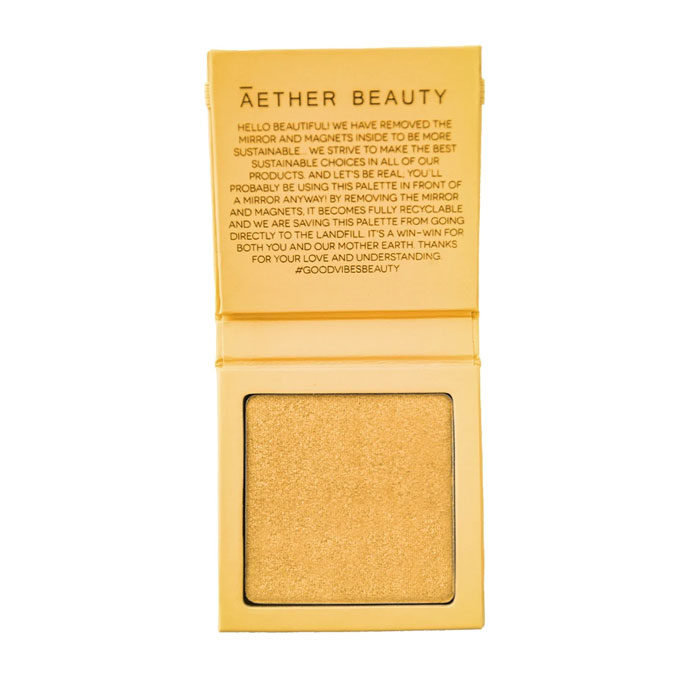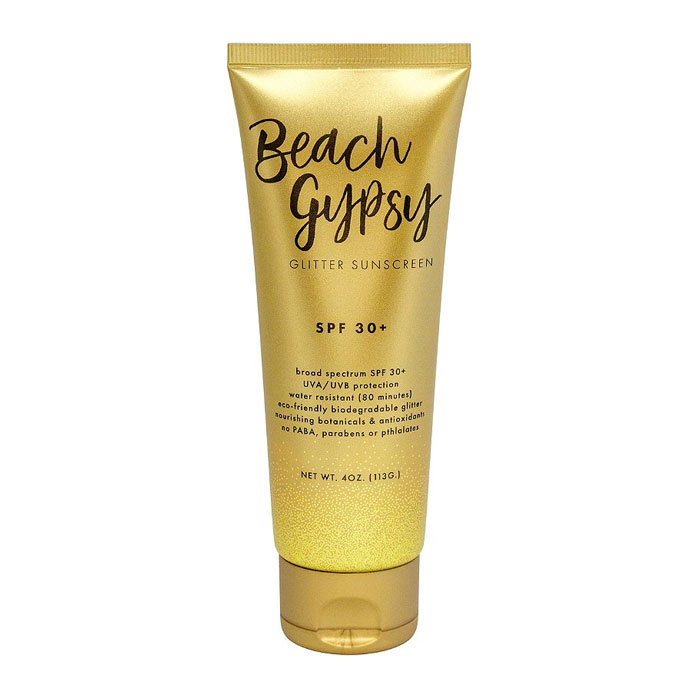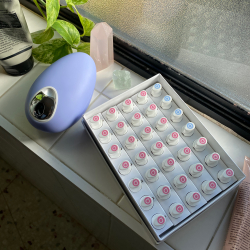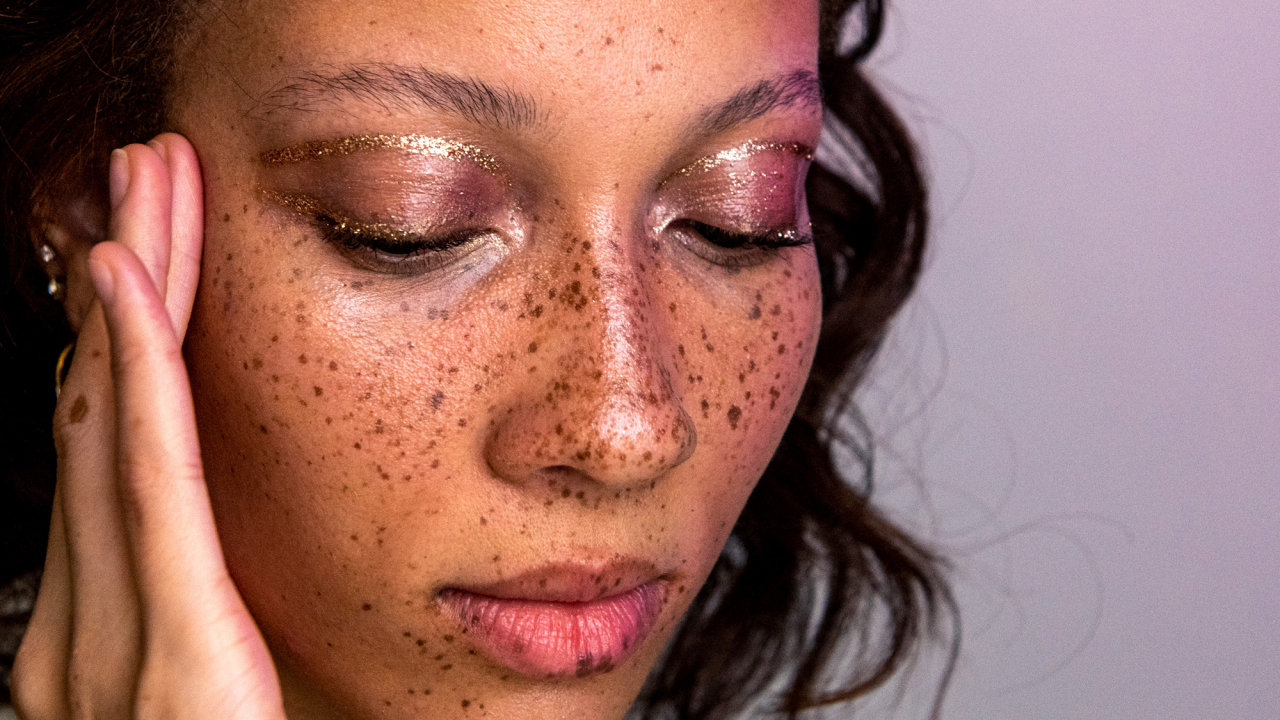
Does Eco-Friendly Glitter Actually Exist? The Experts Weigh In
Here’s everything you need to know about responsible glitter options.
The past couple of years have seen some pretty major innovations in the green beauty space. Not only do we have access to a multitude of options for clean and non-toxic skin care, hair care, and cosmetics, but we’ve also seen brands shift their focus to creating products and packaging that are truly sustainable, whether they’re recyclable, refillable, or biodegradable.
Regardless of these strides, one ingredient seems to remain prevalent in the beauty industry, despite it being one of the most environmentally damaging of all: glitter. Found predominantly in cosmetics and nail polishes, glitter has also become a popular addition to our bath products, sunscreens, and body care, which means it eventually makes its way into our waterways and wreaks havoc on our planet as quickly as it’s washed down our drains.
Fortunately, a few eco-friendly alternatives exist, and while we might not have any holiday parties or music festivals on our radar for the foreseeable future, now is a great time to make the switch from plastic-based glitters. Below, your guide to navigating the (sometimes complicated) world of responsible glitter.
What’s the Problem with Traditional Glitter?
By now we’re all well aware of the global pollution crisis and the detrimental effects of plastic in our oceans, and unfortunately, the glitter found in our common beauty and personal-care products is a major culprit.
“Traditional glitter is, in essence, a microplastic—an incredibly small piece of plastic infamously known for its harmful effects on the environment,” says Tiila Abbitt, founder of Aether Beauty and former head of R&D for sustainability at Sephora. “When found in cosmetics, these tiny particles are destined to make their way down our drains, easily passing through each filtration system and eventually into our waterways and marine systems, adding to the increasingly overwhelming issue of microplastic pollution.”
And it doesn’t end there. “Beyond taking thousands of years for these microplastics to break down and decompose, they are mistaken for food and consumed by fish, birds, and plankton, damaging their livers, affecting their behavior, and eventually leading to death,” says Abbitt.
That said, it’s absolutely crucial that brands remove plastic-based glitters from their formulas and shift to more sustainable options. Enter biodegradable glitter.
What Is Biodegradable Glitter?
As consumer demands for sustainable, mindful beauty continue to rise, brands are beginning to switch to greener ingredients to give their products glitz and gleam. According to Aubri Thompson, clean beauty chemist and founder of Rebrand Skincare, there are two types of “eco-friendly” glitter used today: plant-based and mineral-based. “Plant-based glitters are derived from cellulose or other renewable feedstocks, which may then be dyed or coated to create a colorful effect,” she says. “Mineral-based glitters are from the class of minerals called mica, which are already iridescent. These can be mined or made synthetically in a lab.”
However, these alternatives to traditional glitter aren’t always necessarily good for the planet either, and each comes with its own complexities.
One of the most widely used mineral options, mica, has a pretty shady industry behind it. While, yes, it’s a natural material that doesn’t contribute to our planet’s microplastic problem, according to Thompson, the mining process behind it is an energy-intensive process with a long history of unethical practices—including child labor. That’s why brands like Aether and Lush have started using synthetic mica, or synthetic fluorphlogopite, instead. This lab-made material is deemed safe by the Cosmetic Ingredient Review expert panel and is purer and brighter than natural mica, hence its growing popularity.
If a brand is using natural mica, look (or ask!) for confirmation that they have an ethical supply chain. Both Aether and Beautycounter have committed to sourcing responsible mica when using natural ingredients, and the latter is actively working to create positive change in the mica industry. There are also other ethical mineral-derived options such as calcium sodium borosilicate and calcium aluminum borosilicate, which are made from small, eye-safe flakes of borosilicate glass with a mineral coating, used in cosmetics by brands such as Rituel de Fille.
When it comes to plant-based glitter—what’s commonly used in today’s “biodegradable” loose glitters and gel products—things get a bit more complicated. Its cellulose is typically derived from hardwood trees such as eucalyptus, but, as Thompson explains, only some of these products actually biodegrade on their own. Many still contain a small amount of plastic, usually added as a coating for color and shine, and must be industrially composted in order to fully break down.
Greenwashing, or deceptive marketing that makes a product seem more environmentally friendly than it actually is, is rampant amongst beauty brands and manufacturers alike when it comes to biodegradable glitter. “It’s a huge problem in our industry,” says Rebecca Richards, chief communications officer of (actually) biodegradable glitter brand BioGlitz. “We have encountered manufacturers who falsely claim to make biodegradable glitter, when in reality what they make is industrially compostable glitter. This is not a solution, as we know glitter will almost never make its way to an industrial composting site.”
While “compostable” may initially sound like a great option, it would require its wearer to collect every speck of used product and then ship it off—something that just wouldn’t be expected of the average glitter junkie to do. Plus, as Abbitt points out, this composting process would take over nine months to complete, and it’s virtually impossible to find a facility that will compost anything for this amount of time.
“We have also heard of companies who claim to sell true biodegradable glitter but mix it with plastic glitter to cut down on costs, as well as companies who train their employees to describe their glitter as ‘degradable,’ intentionally confusing customers who may not realize that all plastic is degradable, meaning it simply breaks down into smaller pieces of plastic,” adds Richards.
Industry & Consumer Responsibilty
Having reached out to a number of brands for this story, I was surprised to find that most popular choices, many at the top of many “best biodegradable glitter products” lists, did in fact contain small amounts of plastics and were simply marketed under the guise of being biodegradable—some even going as far as labeling their products plastic-free when they are not.
Brands aren’t always the ones at fault, however. “Many times it’s due to lack of information rather than malintent,” says Thompson. “Brands relay information to their customers, but often the brand doesn’t have the visibility to the sourcing and processing of the ingredient. This is an industry-wide problem that won’t be addressed until brands demand full transparency from their suppliers. As consumers, the best we can do is look for certifications and email brands to ask for more information.”
One brand you can trust to biodegrade on its own is BioGlitz, which sources its sparkle from the manufacturer Bioglitter, which, according to Richards, is currently the only true biodegradable glitter in the world. Its sustainably harvested eucalyptus-based cellulose is pressed into a thin film, dyed with natural cosmetic pigments, and then precision-cut into various particle sizes. Other popular plant-based glitter brands that fully biodegrade (though it’s not clear if they use Bioglitter) include EcoStardust and Sunshine & Sparkle.
So when it comes to all the glitter alternatives out there, which option is best? “When considering a sustainable option, it's most important to look critically at the entire production process, not just the end result,” stresses Richards. With that in mind, shop from brands that are transparent about their practices and are able to confirm the biodegradability of their products. In a world where it’s easy to hold brands accountable via social media, we must be vocal about our concerns and demands. “While it is a difficult task to decipher what products actually do no harm to our planet versus the ones that simply claim not to for marketing purposes, we urge all curious and caring consumers to dig deeper into the companies they support, ask questions, and never trust sustainability claims at face value.”
At the end of the day, what’s most important is that we, as consumers, move away from using traditional plastic glitters while also being mindful of the amount of product we’re purchasing in general. “I think the best approach is to ask ourselves which products really need to contain glitter and shimmer,” says Thompson. “Of course there are some products that wouldn’t be the same without it! But consuming less is the most sustainable thing we can do—in any aspect of our lives.”
Below, our favorite products for sustainable sparkle that you can trust are better, more mindful options for the well-being of our planet.
BioGlitz Explorer Pack
$50
If you’re looking to get your eco sparkle on but consider yourself indecisive, BioGlitz’s Explorer Pack has you covered. This set contains five vials of plastic-free, eucalyptus-based cellulose glitter in various shades and sizes, perfect for use anywhere and everywhere on the skin. Simply adhere with the brand’s algae-based Glitz Glu or other base of your choice. The possibilities are endless!
Rituel De Fille Celestial Sphere Eye Soot
$38
Clean cosmetics brand Rituel de Fille never uses plastic-based glitters in its otherworldly confections, instead opting for mineral-based shimmer derived from eye-safe borosilicate glass and synthetic mica. The wonderfully iridescent Celestial Sphere Eye Soots can be used to add a color-shifting sparkle to any part of the face, not just the eyes.
EcoStardust Jellyfish Biodegradable Glitter Pure
$12
UK-based EcoStardust has been creating whimsical concoctions of plant cellulose-based glitter since 2017, derived from sustainably farmed eucalyptus trees. Its newest collections, Pure and Opal, are both 100 percent plastic free and have been tested to fully biodegrade in fresh water, the hardest environment for something in which to biodegrade. While its older collections are only 92 percent plastic-free, they still biodegrade highly (though not fully) in the natural environment.
BeautyCounter Beyond Gloss
$29
For those looking for a bit of glitz without going over the top, consider this subtly sparkly and universally flattering shade of lip gloss from Beautycounter. The brand not only sources responsible mica over plastic-based glitters for all its products, but it’s actively working to make the mica industry a more transparent, ethical space.
Lush Sunnyside Bubble Bar
$12
Even if you’re not one to wear glitter, there’s something extra luxurious about unwinding with a sparkly bath. Of course, just like our sinks, our tubs are basically a direct route back to our waterways, so it’s crucial to be mindful about the kinds of products we use to soak away the day. Lush gives its products a glittery touch with synthetic mica and borosilicate—rather than natural mica and plastic-based glitters—so you can breathe easy knowing your bath time will be not only eco-friendly, but ethical, too.
Aether Beauty Supernova Crushed Yellow Diamond Highlighter
$38
Looking for a smooth shimmer rather than chunky glitter? Look no further than Aether Beauty’s Supernova Highlighter, which uses ethically sourced mica and crushed yellow diamonds for an out-of-this-world golden glow.
Sunshine & Glitter Beach Gypsy Glitter Sunscreen SPF 30+
$25
Finally, something that makes sunscreen application fun! This water-resistant SPF 30+ sunscreen is infused with nourishing botanicals, antioxidants, and a healthy dose of glitter—and not the plastic kind. The brand has confirmed that its glitter is 100 percent biodegradable, derived from wood cellulose, and is independently tested for degradability in fresh water, salt water, and soil, so you can feel good tossing this one in your beach bag.
Nailtopia Roses Are Red Holiday Kit
$15
If you’re looking to get your nails holiday-ready, consider clean nail-care brand Nailtopia’s new holiday kits. All the glitters used in these limited-edition colors are 100 percent biodegradable and contain no plastic whatsoever, as confirmed by the brand. Here’s to hoping these sparkly shades become permanent fixtures in the brand’s lineup.
Want more stories like this?
Everything to Know about Properly Recycling Your Beauty Products
14 Eczema-Friendly Skincare Products Dermatologists Love
Bubbly & Beyond: The Best Pairings for the Holidays








